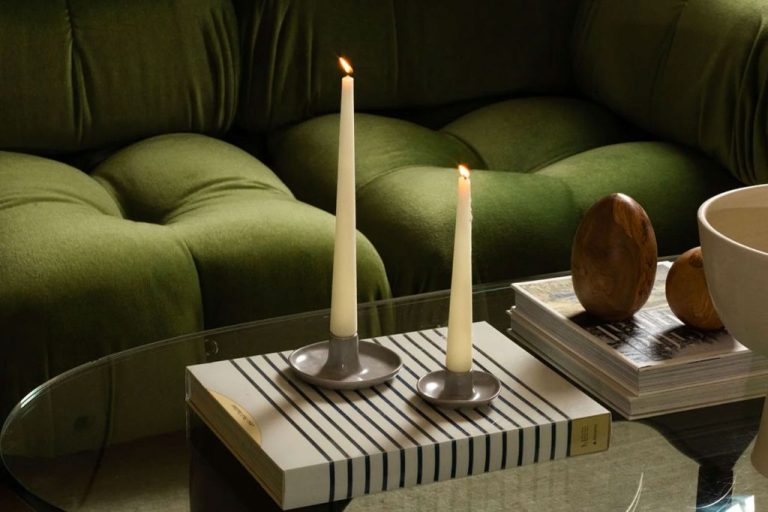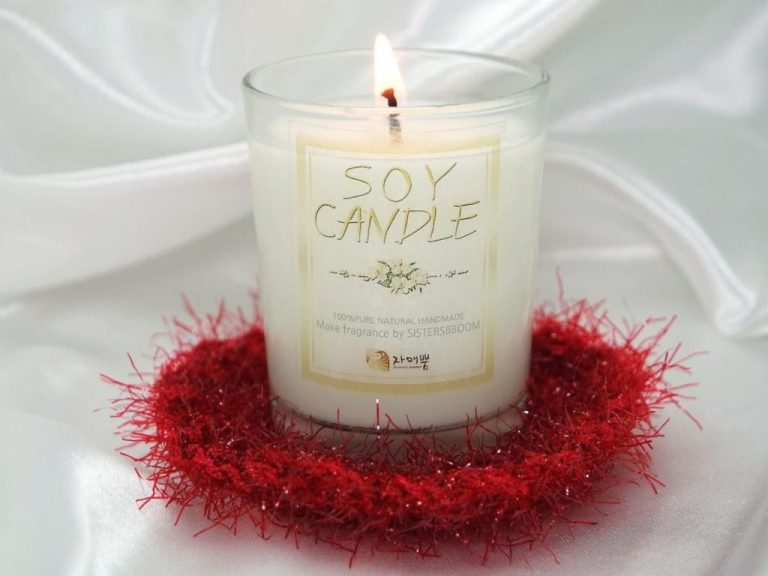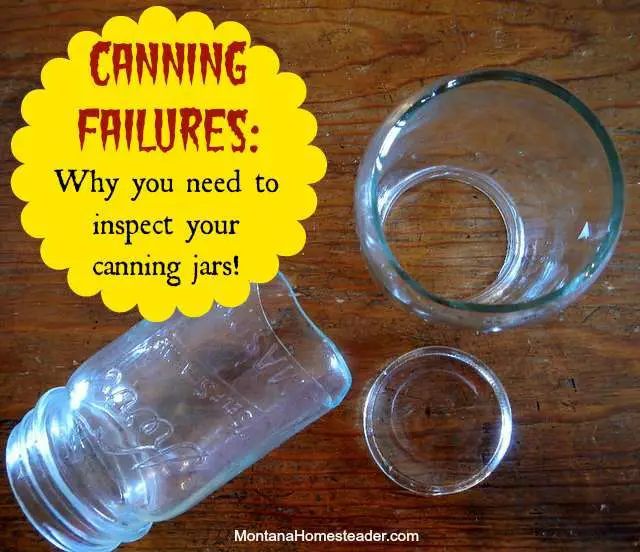Can A Candle Burn In A Jar?
What Happens When a Candle Burns?
Candles provide light and fragrance by burning a solid fuel source called wax. For a candle to burn properly, it needs three main components: wax, a wick, and a heat source to initially light the candle.
The wax in a candle is typically made from paraffin, vegetable oils, beeswax, or other waxy solids that melt at temperatures above room temperature. When the wax is heated by the candle flame, it liquefies and is drawn up the wick via capillary action.
The wick is generally made from braided cotton. Its purpose is to deliver the melted wax to the flame. The wick absorbs the liquefied wax and pulls it up into the flame through capillary action. As the wax vaporizes in the flame, the vapors ignite and release energy in the form of light and heat [1].
For a candle to burn, it needs to be lit by an external heat source like a match or lighter. This heat melts the wax around the wick and ignites the wax vapors. Once lit, the candle flame provides enough concentrated heat to keep the wax melting and the candle burning.
As the wax melts and vaporizes, the wax fuel source is slowly used up. The melted wax also accumulates in the candle holder or jar. When all the wax has been consumed, the candle can no longer sustain a flame and the candle stops burning.
Do Candles Need Airflow to Burn?
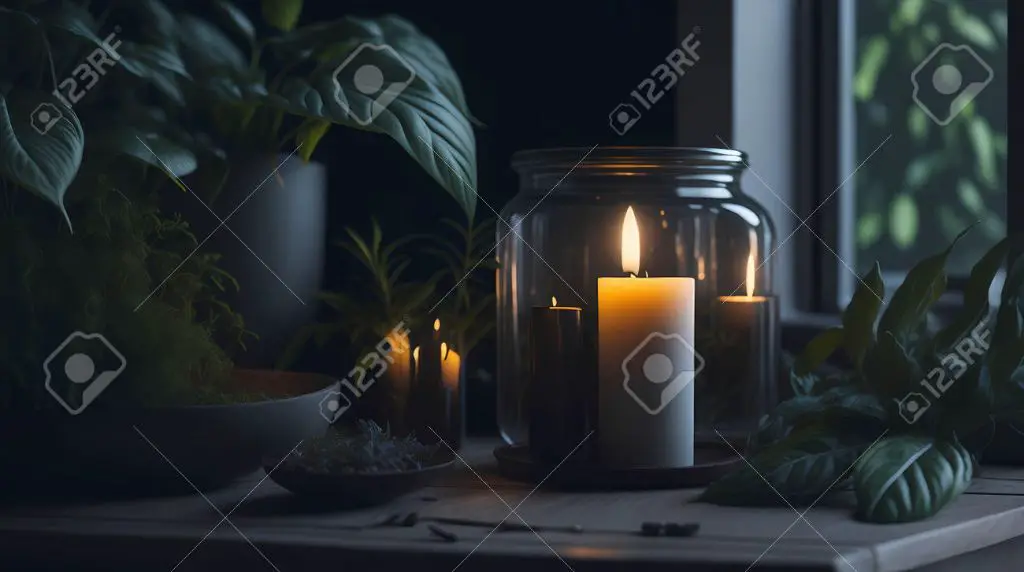
A candle needs oxygen to burn. The flame burns due to a chemical reaction between the wax vapors and oxygen in the air. Oxygen is used up as the candle burns, but air movement replaces it so the candle continues burning.
While a candle can burn for a period of time in an enclosed container or room, it needs some airflow to burn consistently. If there is no airflow at all, the candle will use up the available oxygen and be extinguished. According to candlemakers on forums like CraftServer, too little airflow can result in a weak flame and poor wax pool formation.[1]
A moderate amount of airflow allows for complete combustion, keeping the candle burning. The moving air brings fresh oxygen to the flame and carries combustion byproducts like water vapor and carbon dioxide away from the burning wick. This steady air movement allows the candle to burn cleanly and strongly.
Of course, too much airflow can also cause issues, blowing out the flame or keeping it leaning over to one side. Moderation is key – you need enough airflow for fresh oxygen, but not so much that the flame becomes unstable.
Can Candles Burn in Enclosed Spaces?
Candles require oxygen to burn properly. Enclosed spaces like jars limit airflow around the candle, which can make it more difficult for the candle to burn efficiently.
However, candles can burn in enclosed containers as long as there is at least a small opening at the top to allow some oxygen flow. The candle may burn slower and cooler in an enclosed jar versus open air. According to Suffolk Candles, the flame will take the oxygen it needs and leave other gases like carbon dioxide behind in a closed container. This buildup of carbon dioxide can eventually extinguish the flame if the airflow is too restricted.
So in summary, yes candles can burn in enclosed spaces like jars as long as there is at least a small opening for oxygen. But the candle may burn slower and the flame may go out faster than burning in open air. Proper jar selection and safety precautions are important.
Source: https://suffolkcandles.co.uk/blogs/candles/can-a-candle-in-a-glass-jar-start-a-fire
Considerations for Burning Candles in Jars
When burning candles in jars, there are a few key factors to consider for optimal safety and performance:
Wick Length – The wick length is very important for a clean, even burn. Make sure the wick is trimmed to 1⁄4 inch before lighting to prevent issues like tunneling. As the candle burns down, continue trimming the wick to maintain the proper length. Per Purcell & Woodcock, trimming the wick every time you burn a candle helps it burn evenly.
Jar Material – The material of the jar matters because some are more heat tolerant than others. Glass jars are ideal, as they can withstand the high temperatures of a burning candle without cracking or warping. Avoid plastic and acrylic jars which can melt or release toxins. For metal jars, use caution as they can get extremely hot.
Lid On or Off – Burning the candle with the lid on helps the wax pool evenly across the top. But leaving it on too long causes a lack of oxygen, resulting in black smoke, soot, and an uneven melt. Remove the lid once the wax starts pooling to allow oxygen in. You can put it back on periodically for an even burn.
Choosing the Right Jar for Candle Burning
When selecting a jar for burning candles, the material is an important consideration. The three most common materials used for candle jars are glass, metal, and ceramic. Each has their own advantages and disadvantages.
Glass jars are a popular choice as they allow the candle light to shine through clearly. Glass conducts heat well and most types of glass used for jars can withstand high temperatures. However, glass can break if exposed to extreme heat or direct flame. According to CandleMakingSupplies.net, tempered glass jars are best as they are more durable and less prone to breaking (source).
Metal jars and tins conduct heat even better than glass. Tin and aluminum jars can take very high heat. Copper and brass jars also work well, but can be more expensive. Metal jars don’t break, but the metal can become extremely hot. Metal also blocks light transmission unless the container has cutouts.
Ceramic jars have benefits like high heat resistance and attractive natural looks. However, the porous nature of ceramic makes it prone to holding onto odors. Ceramic containers come in many shapes, styles and designs, but breakage is a risk if exposed to flames or extreme heat.
Consider factors like safety, durability, appearance, fragrance throw, and cost when selecting candle jars. Properly researching and testing different jar materials can lead to the best results for your specific candle making needs.
Safety Tips for Burning Candles in Jars
Burning candles in jars requires some safety precautions to avoid potential fire hazards. According to the National Fire Protection Association (NFPA), candles are an open flame and therefore always carry some risk if not used properly (1). Here are some key tips to burning candles safely in jars:
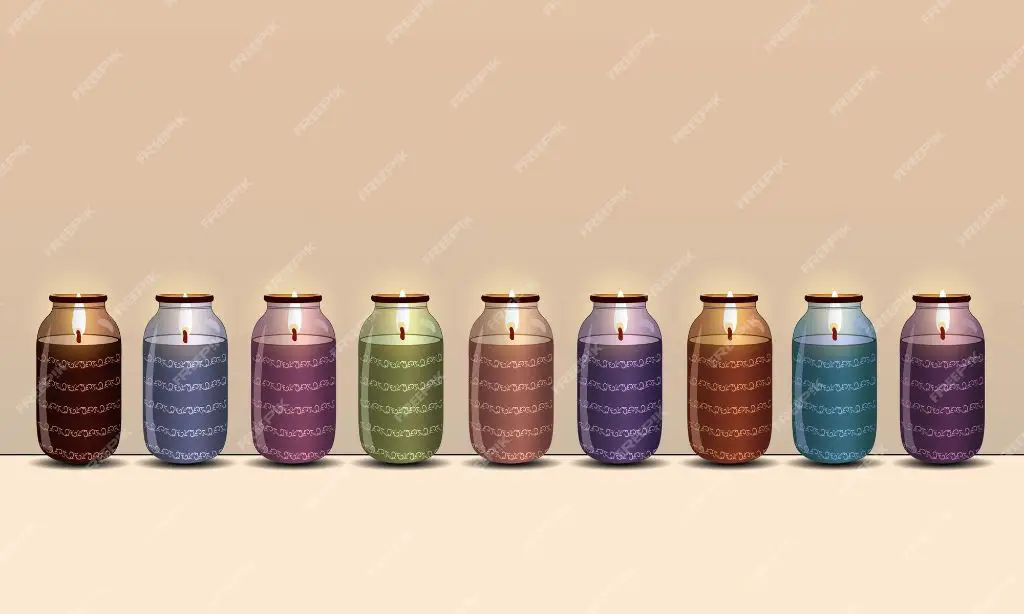
Always keep the candle away from anything flammable. Allow at least 12 inches of clearance on all sides of the jar candle from flammable materials like curtains, furniture, bedding, etc (2). Do not place jar candles on or near anything that can catch fire.
Never leave a burning candle unattended. Always extinguish the flame before leaving the room. According to the NFPA, two out of five home candle fires start when candles are left unattended (1).
Do not burn a candle all the way down. Extinguish the flame before it gets too close to the bottom of the jar, generally when there is less than 1/2 inch of wax remaining. The closer the flame gets to the bottom, the more likely the jar will crack from the heat.
Watch for signs like soot building up on the jar, flickering flames, or black smoke, which can indicate unsafe burning conditions. Trim the wick as needed to maintain a steady flame.
Keep candles out of reach of children and pets to avoid accidental fires. Do not allow children to light or move jar candles.
Never burn a candle overnight or leave it lit if you fall asleep, as you won’t be able to monitor it or react if a fire starts. Fires can develop quickly and escape a room in just minutes (3).
With proper precautions, you can safely enjoy the light and ambiance of candles in jars. But be vigilant, as open flames always represent a hazard in the home.
(1) https://www.nfpa.org/education-and-research/home-fire-safety/candles
(2) https://candles.org/fire-safety-candles/
(3) https://www.fmins.com/blog/candle-safety/
Making Your Own Jar Candles
Making DIY jar candles is easy with just a few supplies. Here are step-by-step instructions to make your own:
1. Gather supplies – You’ll need wax (soy, paraffin, or beeswax), wicks, fragrance or essential oils (optional), jars, and a double boiler (or makeshift one). Make sure jars are heat-safe.
2. Melt the wax – Using a double boiler, melt wax completely. Add fragrance now if using.
3. Cut wicks – Cut cotton or wood wicks so they are 1-2 inches taller than your jar. Attach wick tab to bottom of wick.
4. Pour wax into jars – Carefully pour melted wax into each jar about 1/2 inch deep. Let cool slightly.
5. Add wicks – Stick wick tab to center bottom of jar. Hold wick centered until wax hardens.
6. Pour rest of wax – Remelt unused wax and carefully pour rest into each jar, leaving 1/4 inch headspace.
7. Let candles cure – Allow candles to fully harden for 24-48 hours undisturbed.
8. Trim wicks – Using wick trimmers, trim wicks to 1/4 inch before burning.
Follow safety precautions like using a thermometer and heat-safe equipment. Get creative with layers, embeds, scents, and jar shapes!
Creative Jar Candle Design Ideas
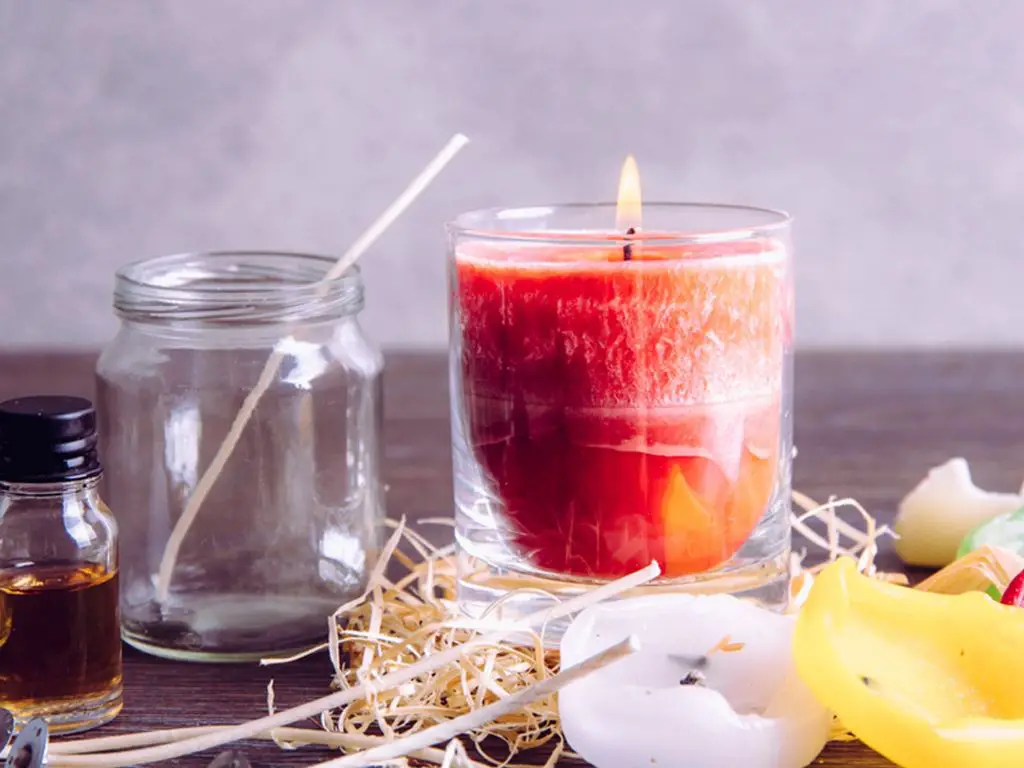
Jars allow for so much creativity when making candles. Here are some ways to make your candles as decorative as possible:
Choose colored wax or multiple layers of wax in different hues. Go for bold colors like red or turquoise, or soft pastels like lavender or sage green. You can alternate between layers or create stripes, swirls or other patterns. Just pour each layer of a different colored wax once the previous layer has partially set.
Select fragrance oils that set the right ambiance, like floral scents for spring or woodsy scents for fall. Scent is powerful for setting a mood or evoking memories. Go for complementary or contrasting scents for a custom blended aroma.
Look for unique jars and vessels to hold your candle. Vintage glassware like decanters or glass food containers make for interesting candle holders. You can also repurpose teacups, bowls, vases or other containers. For a rustic look, try a mason jar.
Embellish the outside of plain glass jars. Tie raffia, twine or ribbon around the rim, or glue on dried flowers, leaves or other natural elements. Brush the outside with glitter paint or metallic rub-ons. Print or decoupage patterned scrapbook paper onto the glass.
The options are endless when making DIY candles in jars. Get creative with colors, scents and decorative touches to make customized candles that make great gifts or home accents.
Benefits of Burning Candles in Jars
Burning candles in jars offers several benefits compared to regular pillar or taper candles. Here are some of the top reasons to use jar candles:
Aromatherapy. Jar candles allow you to enjoy the therapeutic benefits of aromatherapy oils and fragrances. The jar helps contain the scent so it is released steadily into the surrounding air. Popular scented jar candles include lavender, eucalyptus, vanilla, jasmine, rose, sandalwood, and citrus blends. The scents can help promote relaxation, improve mood, and create a soothing ambiance.
Mood lighting. Jar candles create a warm, cozy glow perfect for setting the mood. The flame casts a diffuse, flickering light that is more soothing than bright overhead lighting. Place jar candles around a room, or group several together as the centerpiece for a table, to create an inviting atmosphere. Their light is ideal for relaxation spaces, dinner gatherings, or romantic evenings.
Design element. The jar itself becomes a decorative element in addition to the candle. Vintage jam jars, mason jars, apothecary jars, and other glass containers make for rustic or elegant candle holders. Etched, painted, or otherwise embellished jars add artisanal flair. The fragrances and colors of the candles can also be coordinated with home decor themes.
According to this source, additional benefits of jar candles include easier cleanup and better burn performance compared to other candle formats. Their versatility and visual appeal make them a popular candle choice.
Frequently Asked Questions
Many people have common questions when it comes to safely burning candles in jars. Here are answers to some of the most frequently asked questions:
Are jar candles safe?
Jar candles can be safe if used properly. Be sure to keep the candle away from flammable materials, trim the wick to 1⁄4 inch before lighting, and never leave a burning candle unattended. Avoid cheaply made jar candles as these can be prone to issues like poor wick placement. Quality jar candles from reputable makers are generally safe when burned responsibly. See Candles.org for more tips.
How do I clean out a used candle jar?
First, make sure the candle has completely finished burning and is cooled. Use a knife to scrape off any remaining wax stuck to the sides. Next, place the empty jar upside down on a baking sheet and bake at 200°F for 15 minutes to melt any residual wax. Finally, wash the jar with soap and water to remove the melted wax. The jar can then be reused or recycled.
What is the best type of jar for candles?
Wide-mouthed canning jars often work best as they allow for airflow to the flame. Look for heat-resistant jars made of glass, metal, or ceramic. According to Lone Star Candle Supply, avoid plastic containers which can melt from the flame. Also opt for jars with an opening about 2-3 inches wide to prevent issues like tunneling.
How do I make the candle last longer in the jar?
Filling the jar with the right wax volume helps. Leave at least 1⁄2 inch of headspace between the wax and lid. Using soy or beeswax candles instead of paraffin can increase burn time. Proper wick sizing is also key—too small and the flame will be weak, too large and the candle burns up quickly. Trim the wick to 1⁄4 inch before each lighting. Finally, make sure not to burn the candle for more than 2-4 hours at a time.

